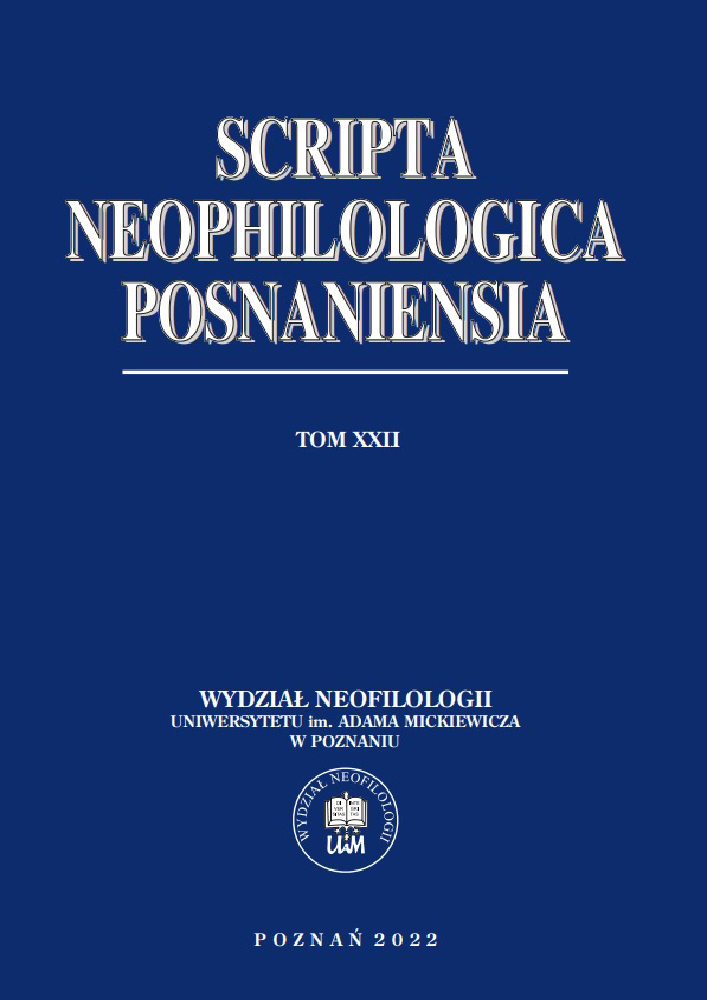Abstrakt
Human language as the most complex communication system on Earth is the ‘home’ of Man. As such, it is the most expressive indicator of humanness. It also constitutes the domain of human alienation from the rest of the living world. However, the entire living world shares and is subject to what may be called the ‘biological imperative’ with its Universal (exceptionless) Mechanism of the Grip of Biological Imperative. The Mechanism, which is a part of the Behavioural Gematon realized through the operations of sensing, acting, doing, performing, expressing, and communicating, lies at the base of all behaviour. It is additionally and quite naturally present in human linguistic-communicative behaviour. The latter is, in turn, subject to the Mechanism of the Grip of Linguistic Imperative. The so-called ‘state language’, or the language generated by the ‘soft’ institution of the state, is regarded as being a direct and most expressive instance of linguistic-communicative imperativeness, whose social reception tends to be loaded with a whole plethora of negative emotions.
Finansowanie
bios
natura
podwójna helisa DNA
organizm
imperatyw biologiczny
zooepitymia
podwójna helisa językowa
kody organiczne
Mechanism Biologicznego Uścisku Imperatywnego
meta wspólnota biologiczna
Językowy Mechanizm Uścisku Imperatywnego
Gematon Behawioralny Człowieka
gematokonektom
dychotomia linearna z domenami
alienacja
lingwolaboreza
kultura
emocje
język państwowy
Bibliografia
Aikhenvald, A.Y. 2010. Imperatives and commands. Oxford: Oxford University Press.
Blaustein, M.P., Kao, J.P.Y. i D.R. Matteson. 2019. Cellular physiology and neurophysiology. Oxford: Elsevier.
Brown, T.A. 2002. Genomes. Wydanie drugie. Oxford: Wiley-Liss.
Eberhard, D.M., Simons, G.F. i C.D. Fennig. (red.). 2021. Ethnologue: languages of the world. Wydanie 24. Dallas, TX: SIL International.
Hare, R.M. 1967. „Some alleged differences between imperatives and indicatives”. Mind 76. 309-326. https://doi.org/10.1093/mind/LXXVI.303.309 DOI: https://doi.org/10.1093/mind/LXXVI.303.309
Eliade, M. 1957/1961. The sacred and the profane. New Yok: Harper Torchbooks.
Jørgensen, J. 1938. „Imperatives and logic”. Erkenntnis 7. 288-298. https://doi.org/10.1007/BF00666538 DOI: https://doi.org/10.1007/BF00666538
Mattingly, I.G. 1990. „The global character of phonetic gestures”. Journal of Phonetics 18. 445-452. https://doi.org/10.1016/S0095-4470(19)30372-9 DOI: https://doi.org/10.1016/S0095-4470(19)30372-9
Puppel, S. 2013. „The ‘imperial’ life of natural languages”. W zbiorze: Gabryś-Barker, D., Piechulska-Kuciel, E. i J. Zybert. (red.). Investigations in teaching and learning languages. Studies in honour of Hanna Komorowska. Heidelberg: Springer Verlag. 3-8.
Puppel, S. 2018. „On the workings of the ‘language kite’: towards a holistic account of the human linguistic-communicative endeavour (de laboribus milvi linguae)”. W zbiorze: Bielak, M.I., Puppel, S. i W. Maliszewski. (red.). Linguolabourese: language and communication in action, Advances in elinguistics. Piła: PWSZ w Pile. 57-66.
Puppel, S. 2022. Habent sua fata linguae (czyli szkic o tym, że wszyscy mamy język, że ‘mieszkamy’ w nim i co się z nim dzieje). Scripta de Communicatione Posnaniensi. Prace Naukowe Zakładu Ekolingwistyki i Komunikologii UAM. Tom X. Poznań: Perfekt Gaul i Wspólnicy sp.j.
Ross, A. 1944. „Imperatives and logic”. Philosophy of Science 11. 30-46. https://doi.org/10.1086/286823 DOI: https://doi.org/10.1086/286823
Watson, J.D. 2003. DNA: the secret of life. New York: Random House.
Licencja

Utwór dostępny jest na licencji Creative Commons Uznanie autorstwa – Bez utworów zależnych 4.0 Międzynarodowe.

